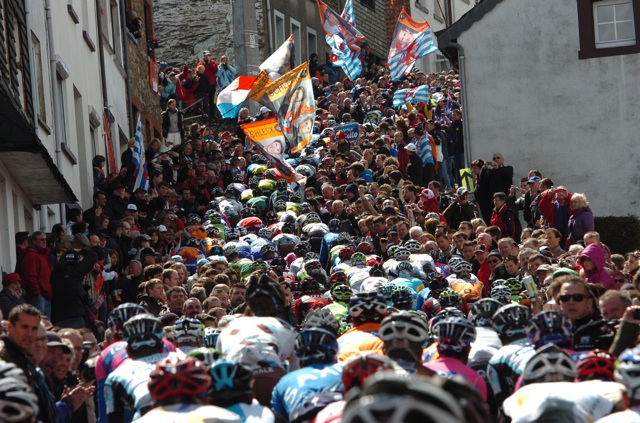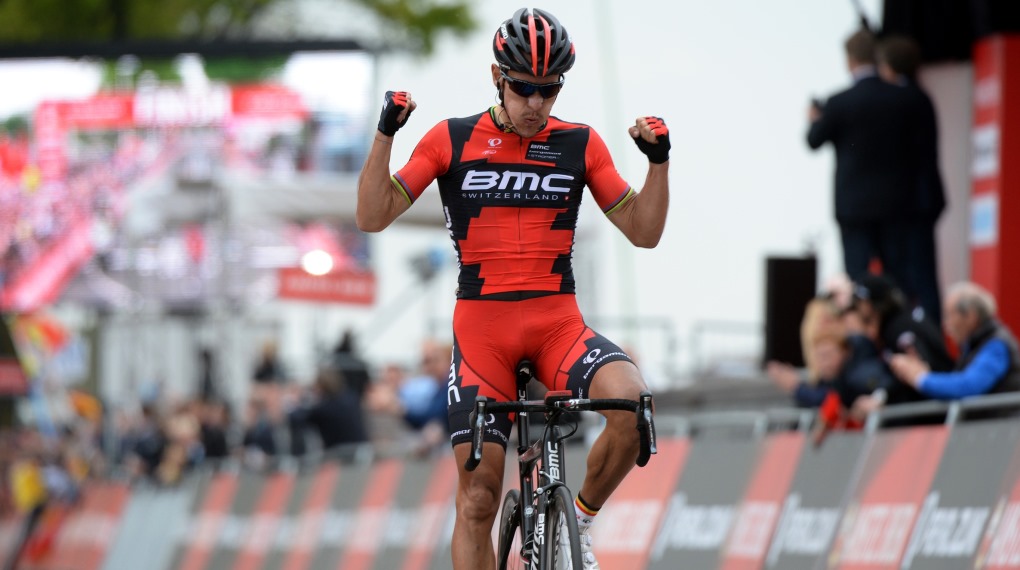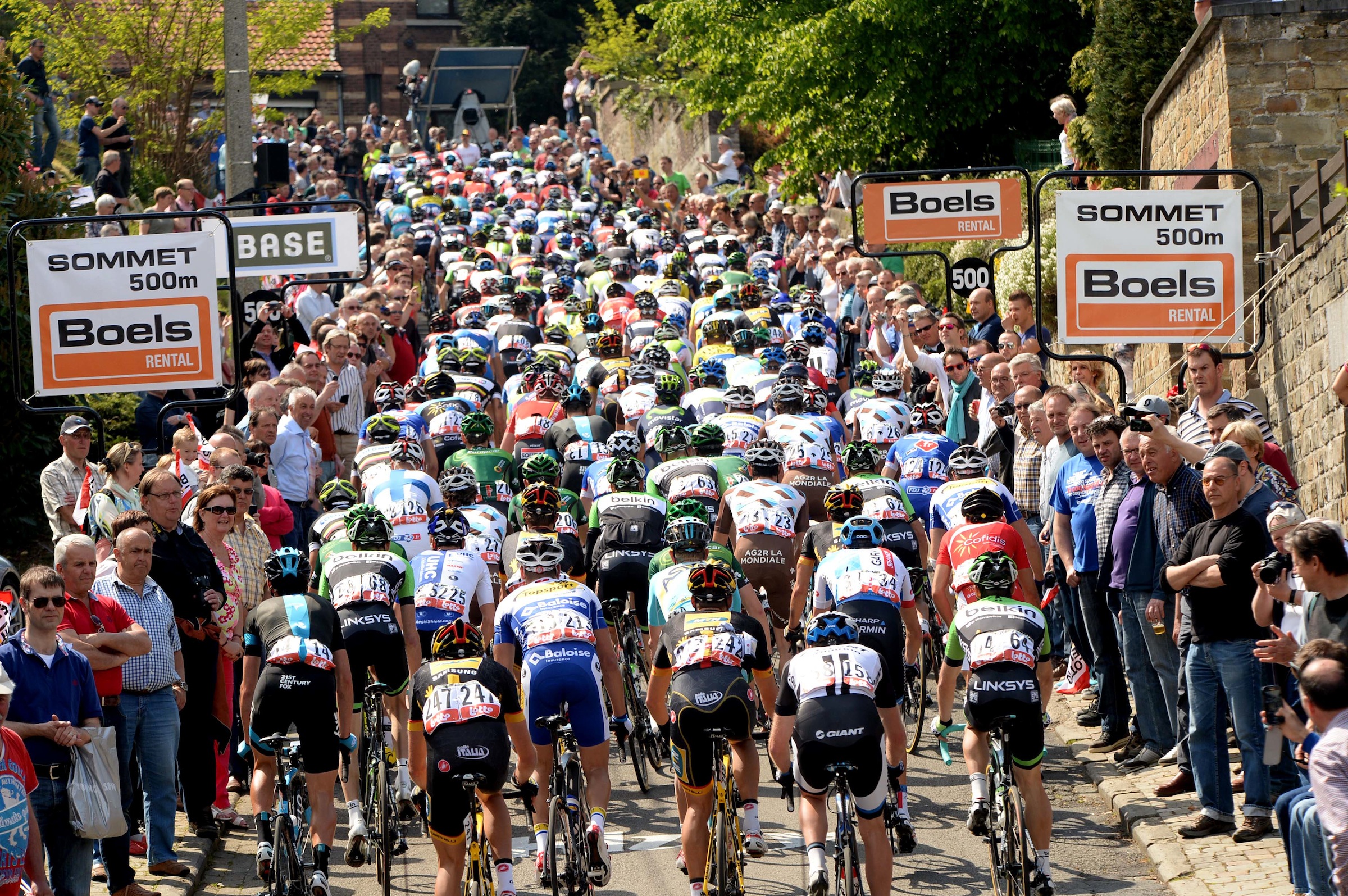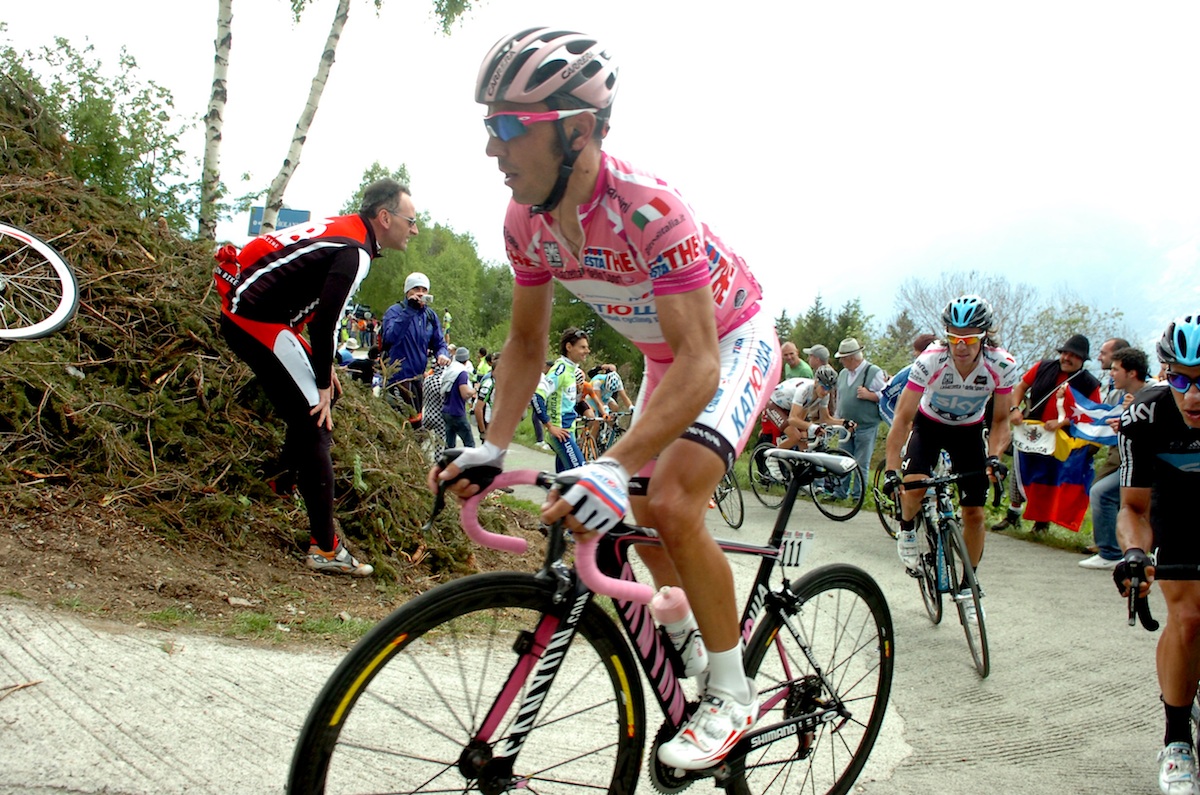Philippe Gilbert
-

Joaquim Rodriguez (Katusha, left) and Dan Martin (Cannondale-Garmin, right) race up the final, uncategorised ascent at Liege-Bastogne-Liege (Pic: Sirotti)
-

Each of the Ardennes Classics has its own distinct flavour, but Liege-Bastogne-Liege is the daddy of them all
-

Philippe Gilbert: Wallonia's favourite son (Pic: Sirotti)
-

The 2014 La Fleche Wallonne delivered another thrilling denouement on the Mur (Pic: Sirotti)
Philippe Gilbert
If you’ve only come to cycling in the last couple of years, the aura around Philippe Gilbert might seem like a bit of a mystery. Sure, he won Amstel Gold last season and was world champ in 2012 but he’s been far from the prolific force that would justify the way he’s talked about.
But between 2010 and 2011 Philippe, Gilbert had one of the most amazing purple patches in modern cycling history. He warmed up in 2010 with a win in the Amstel Gold Race, flying away from the lead group on the slopes of the Cauberg and making victory look very easy.
However, 2011 was the main act. Gilbert became only the second rider in history (after Davide Rebellin in 2004) to record a clean sweep of Ardennes Week, winning Amstel, Fleche Wallonne and Liege-Bastogne-Liege all in a row. He also added Strade Bianche, Brabantse Pijl, Clasica San Sebastien and both the Belgian national TT and road titles, as well as stage of the Tour de France and the overall at the Tour of Belgium. Basically, in one calendar year, Gilbert amassed a palmares that would be better than 95 per cent of most riders’ whole careers.
And it’s not just the fact that he won, it’s the way he did it. Look at the final kilometres of the 2011 Fleche Wallonne. After the two-man break of Jerome Pineau and Marco Marcato had been reeled in, Gilbert had no qualms about going to the front of the group. And instead of waiting for a sprint finish, attacked with about 250m to go, daring everyone else to follow him. He’s happy to play the protagonist, and as such loses as many races as he wins because of that attacking style. But when he does win, he wins in a way that the armchair fan dreams of, streaking off the front of the bunch with an attack that positively radiates panache.
The fact that Gilbert is from Wallonia, the region of southern Belgium where La Fleche Wallonne and Liege-Bastogne-Liege are held (the Amstel Gold Race is over the border in Belgium) only adds to his aura and Fast Phil is considered a God in these parts.





